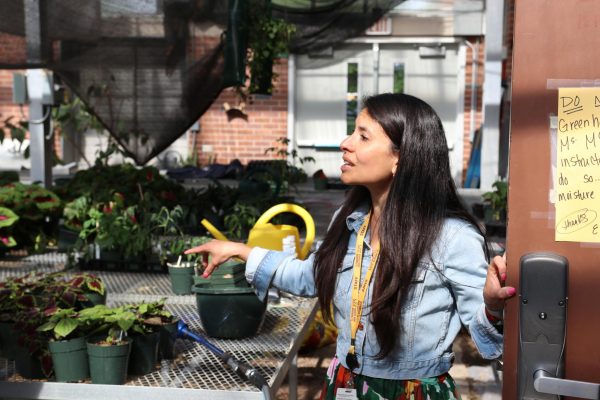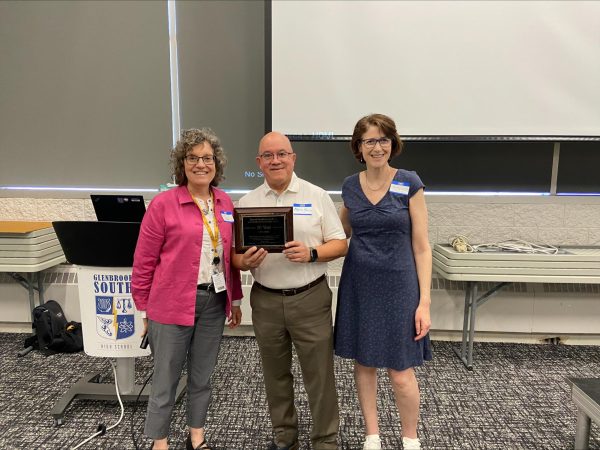Approval of new AP Physics course offers more accessibility
March 16, 2020
The District 225 Board of Education recently added the AP Physics 1 course to the 2020 curriculum, according to Principal Dr. Lauren Fagel. Beforehand, South only offered AP Physics C, which required present or past enrollment of AP Calculus AB. In comparison, the new AP Physics 1 course only requires the completion of Algebra 2, stated Jeff Rylander, instructional supervisor of the Science Department.
“One of the goals that we have as a department and even as a school is to provide as much equity and access to courses as we can,” Rylander said.
Other AP courses, like AP Biology and AP Chemistry, do not have prerequisites, Rylander said. Before AP Physics 1 was offered, Rylander saw how limited other students felt if they didn’t meet the requirements. With the new course, a wider range of students are able to take the class and pursue physics at a higher level. Junior Gabby Priovolos is currently enrolled in Algebra 2 and feels that the new course will allow her to continue learning physics.
“After completing a year of algebra, I wouldn’t have done calculus to be in a physics-calculus based class, so I figured that [taking AP Physics 1] would be much easier for me,” Priovolos said. “There are so many students with so many different comfort zones and abilities to do certain things, but at the same time, there’s a wide range in each category to suit each person’s ability to learn.”
Science Teacher Laura Jane Elgass helped Rylander write the proposal of the course for the Board to approve. She said the goal in mind when creating the course was to allow more kids to take a higher level of physics even if they do not fulfill the math requirements. She wanted kids who love physics to be able to explore it more.
“Sometimes students get to junior year and realize they really like [physics] and want to learn more about it, but there isn’t anywhere to go because [they] don’t have calculus yet,” Elgass said. “That leaves a void. Someone could really fall in love with physics but just need another year of math. This course serves as a springboard for people that have a budding interest in this kind of science.”
Students in the AP Physics 1 class will take a different AP test than students in the AP Physics C class, Rylander said. AP Physics C follows a college semester and has 2 AP exams at the end of the year while the new AP Physics course will only have one AP test, Elgass said.
“During the first semester they are done with the content that will be covered on their first AP test,” Elgass said. “We are now entering Electricity and Magnetism, that will cover the content on their second AP test, so it follows a true college semester.”
In comparison, senior Josie Sobecks currently takes AP Physics C and says that she would not have taken AP Physics 1 because many colleges do not accept the AP credit. While Sobecks currently enjoys taking AP Physics C and finds the course load to be manageable, she agrees that AP Physics 1 class will be more accessible.
“I think it’s a really great thing for kids who have not taken calculus to develop their interest in physics,” Sobecks said. “I’m glad the class exists so that in the future, students will not be shut out of the opportunity to learn.”
While there is a lot of overlap in both courses, AP Physics C will cover Electricity and Magnetism more than AP Physics 1. AP Physics 1 will also cover a couple of topics that are not covered in AP Physics C.
“[We have to develop a new curriculum but] that doesn’t mean [we] can’t borrow pieces [of curriculum] from existing places,” Elgass said. “There might be math problems that are great for AP Physics C and are also great for AP Physics 1. The physics we are teaching at this level is pretty established.”
AP Physics 1 will only be one block, while the AP Physics C class is a block and a half, Elgass said. She thinks this will also make the course more accessible to students because there is less of a time commitment.
“Students have a lot of things they’re interested in and now is the time to explore them,” Elgass said. “Here is an opportunity to study more physics with less of a time commitment, which is a good option.”








